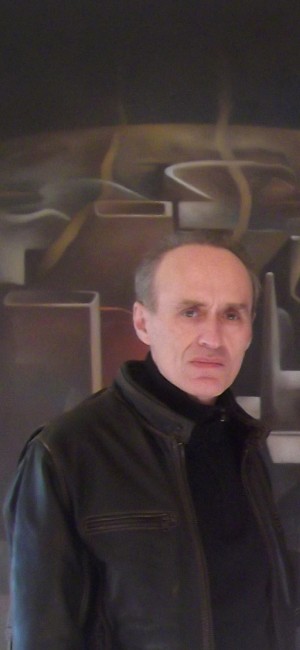Artist Roman Kriheli Transcends Time
GALO: How did that affect your work? Did you start working in a more abstract vein?
RK: No. Not right away. And I think it’s amazing after so many years, even though I’ve tried many different styles basically I consider myself a neo-classical painter. My art is based on classical principles.
GALO: Those principles have held up, you must feel, over the centuries.
RK: Yes.
GALO: You hear about some young artists that may want to throw all of that on the trash heap and just start fresh with their own vision but something can be lost in the process, if there isn’t some kind of respect, knowledge of the past.
RK: Absolutely. It’s like…imagine a tree without roots — there would be no life, no fruit on the tree, because there are some timeless principles in every form of art, music, [and] painting that you can’t ignore.
GALO: And throwing those principles out the window can be very dangerous.
RK: ABSOLUTELY.
GALO: You just made the analogy of the tree without roots and I think it’s possible with your coming from the old world to the new; you wanted to bring your roots with you. Maybe by your bringing your own view of classical art and the world you came from, it’s been its own sustenance for you over the years. Would you ever consider going back – now that you’re reestablished here?
RK: To travel around, but after so many years…
GALO: This is your home.
RK: Absolutely. I feel that there’s no city like New York. Everywhere I go, after a while I miss New York. It’s the magical power of the city.
GALO: You had your one man show in New York with the Lynn Kottler Galleries. How was that received?
RK: It was a successful show. It was quite well received. We had some reviews, even in the Jewish papers, it was reviewed. I sold some paintings I remember.
GALO: Around that time, you set up a workshop for yourself in Soho.
RK: Not right away. We had quite a large house in Queens. I had my own kind of studio. After a while I had the studio in Soho.
GALO: When you had the studio in Soho in the 80s that was a time when there was a tremendous amount of activity going on, and several galleries opened up that gave attention to European artists as well as Americans. Was that a good energy for you?
RK: Absolutely –without a doubt. It was very productive.
GALO: Who were some of the artists you remember meeting at that time?
RK: I liked the new generation kind of American painter [such as] Eric Fischl, Julian Schnabel, [and] Ross Bleckner; very talented.
GALO: Mary Boone started up a big gallery.
RK: And Leo Castelli had some big shows.
(At this point, Roman left hurriedly to put more change in the parking meter, and happily returned without a ticket.)
GALO: I wanted to get back to your work and your preference for Neo-Classicism. Shuttling back and forth between different styles, did you find the public has been overall accepting of that or do you find they’re more interested in the neo-classical aspect? What kind of impressions do you get from your public?
RK: Different kinds. It always comes down to the personal choices, personal tastes, but I think the most important thing for the artist is you just have to be yourself and continue to be what you really are, not just to adjust to something else.
GALO: The playwright Lillian Hellman once said you can’t cut the fabric of your dress to fit the costume of the times. You have to be yourself.
RK: Absolutely and it shows.
GALO: In the integrity of the work?
RK: You have to have the love and devotion to your art, and if you’re not really doing what you really are, it’s impossible.
GALO: I wanted to ask you a little about your work in portraits. One of the images we looked at—the Oracle or Pharaoh. Sometimes you will pick mythological characters, other times it seems to be more personal. Do you occasionally pick people out of your own association?
RK: Yes, I have portraits of my friends, family, my brother’s portraits, [and] my mother’s portraits.
GALO: Are you the only one within the family that’s chosen to make a life career out of painting?
RK: Yes. My father had some artistic talents as a young man. He used to draw. I think I inherited some, but he didn’t really follow that.
GALO: Do you see travel as an inspiration? If you were to leave New York, even for short periods, would you want to explore more of the U.S. or would you go out of the country?
RK: I don’t have concrete thoughts about that, but yes, of course, the travel is very inspirational, very helpful to your work; always to get some fresh impressions.
(Article continued on next page)

